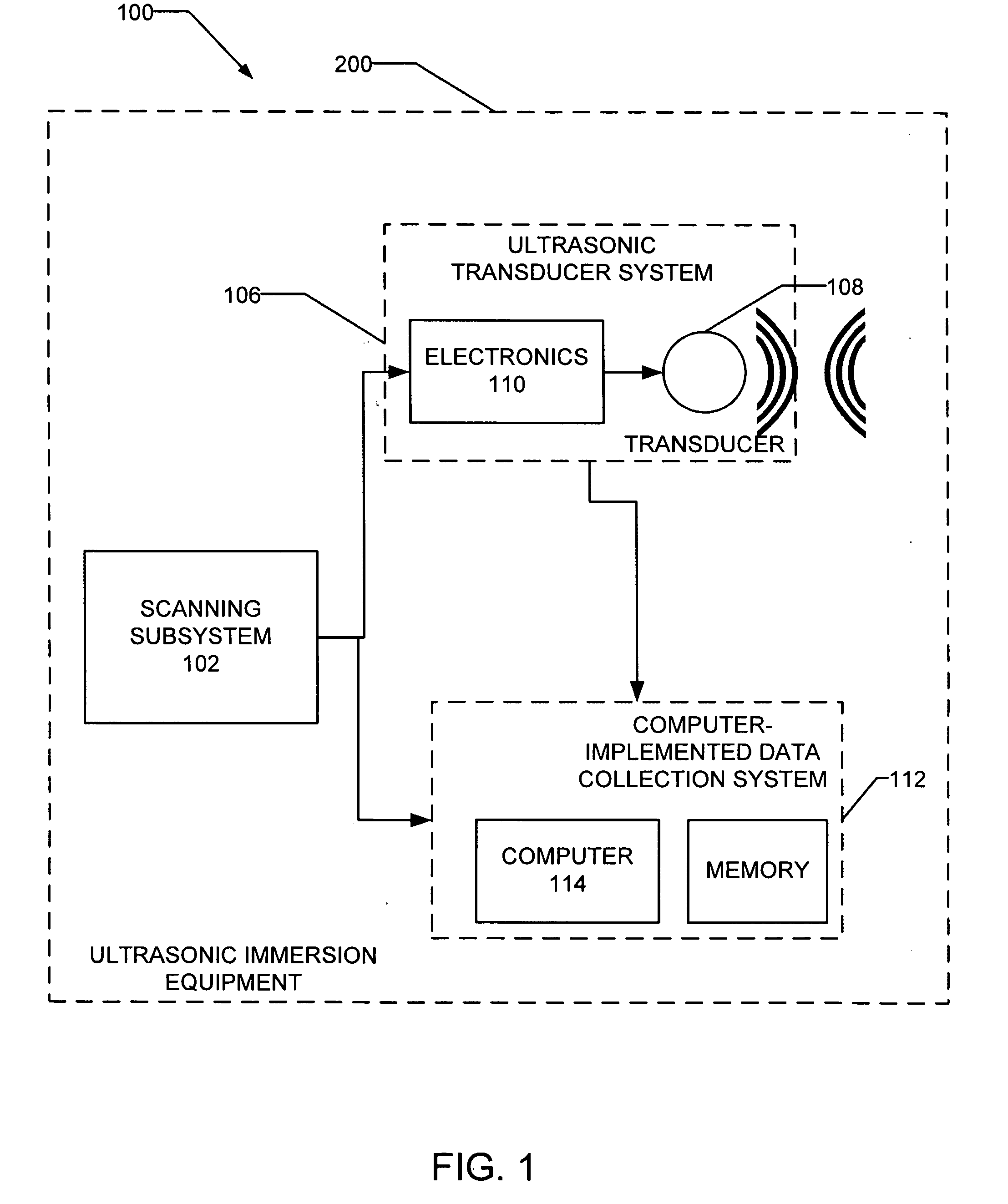Methods and apparatus for porosity measurement
a non-destructive and porosity technology, applied in the direction of instruments, heat measurement, specific gravity measurement, etc., can solve the problems of composite structure having unique flaws, early failure of critical components, and different types of defects in design and manufacturing methods
- Summary
- Abstract
- Description
- Claims
- Application Information
AI Technical Summary
Benefits of technology
Problems solved by technology
Method used
Image
Examples
Embodiment Construction
[0020] Technical effects of the present invention include the non-destructive measurement of porosity of a composite structure and / or the generation of a digital imaging showing porosity of the composite structure.
[0021] Some configurations of the present mention use a porosity measurement method that uses standard ultrasonic immersion equipment similar to equipment used for inspecting metal forgings. Such equipment is readily available for use in inspecting composite structures and is manufactured by many companies, although the computer subsystems of the readily available equipment are not preconfigured as described herein. In some configurations, and referring to the example configuration block diagram 100 of FIG. 1 and the pictorial diagram of FIG. 2, there are three subsections of ultrasonic immersion equipment 200, namely
[0022] (a) a scanning system 102 configured to position a transducer 108 for transmitting and collecting ultrasonic data,
[0023] (b) an ultrasonic transduce...
PUM
 Login to View More
Login to View More Abstract
Description
Claims
Application Information
 Login to View More
Login to View More - R&D
- Intellectual Property
- Life Sciences
- Materials
- Tech Scout
- Unparalleled Data Quality
- Higher Quality Content
- 60% Fewer Hallucinations
Browse by: Latest US Patents, China's latest patents, Technical Efficacy Thesaurus, Application Domain, Technology Topic, Popular Technical Reports.
© 2025 PatSnap. All rights reserved.Legal|Privacy policy|Modern Slavery Act Transparency Statement|Sitemap|About US| Contact US: help@patsnap.com



